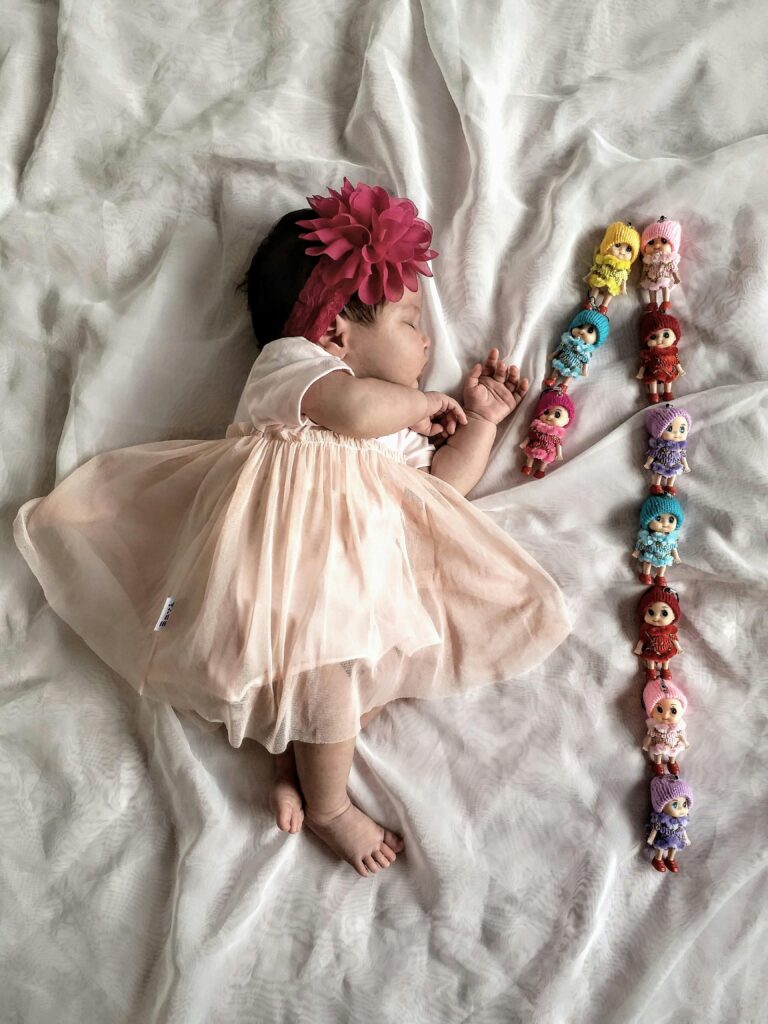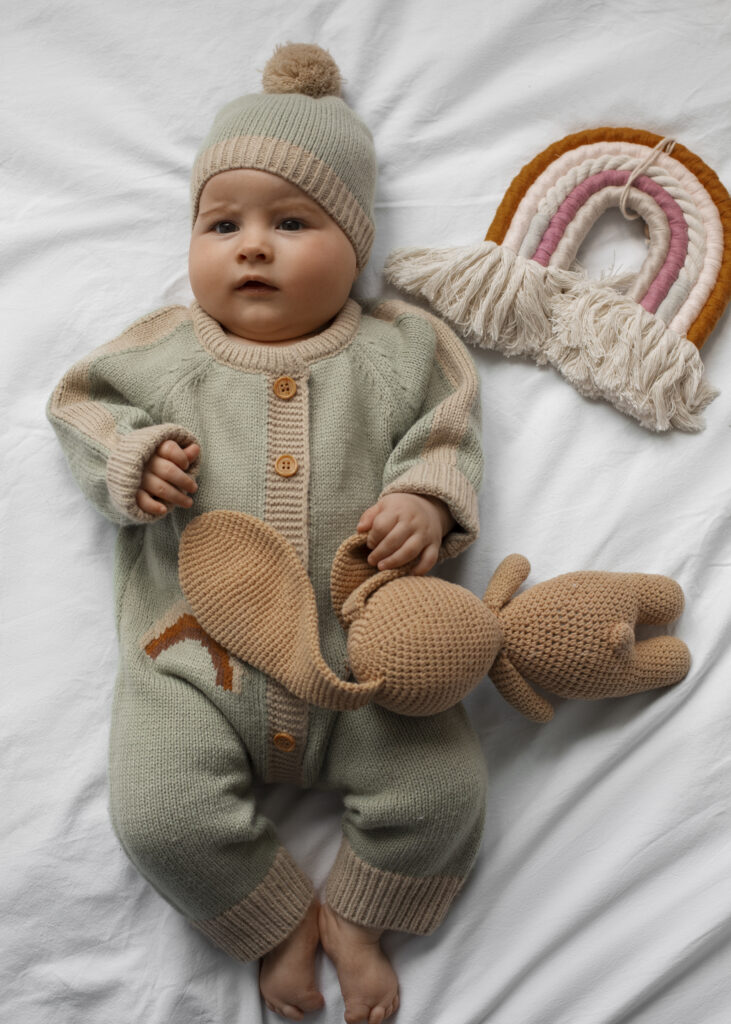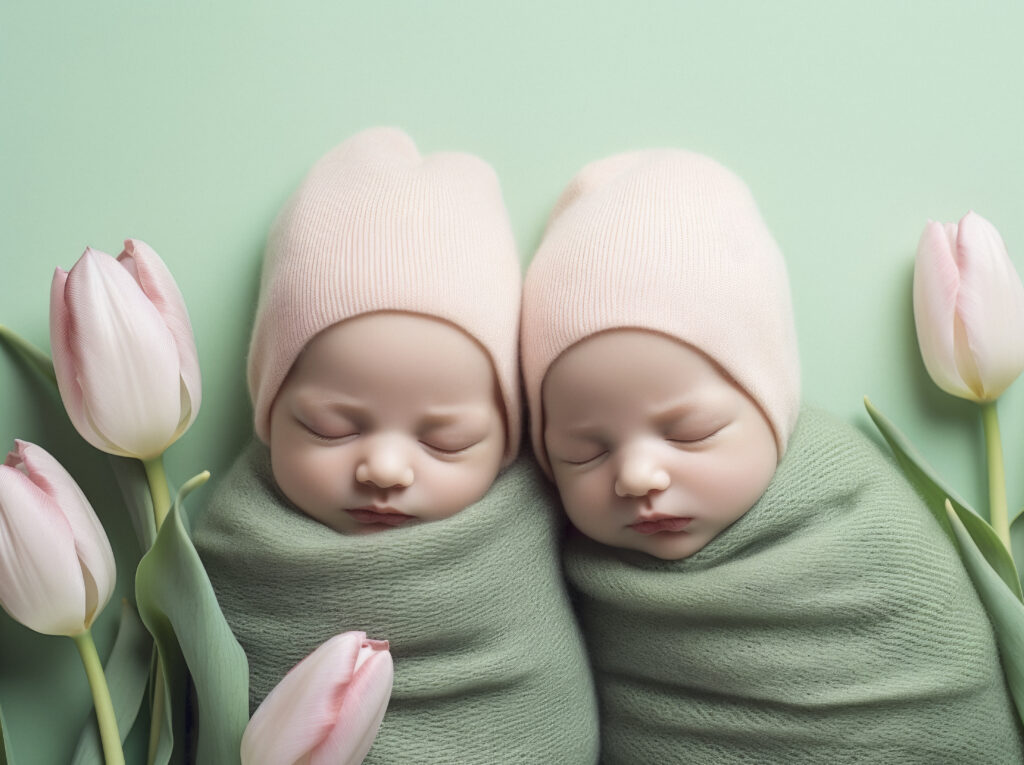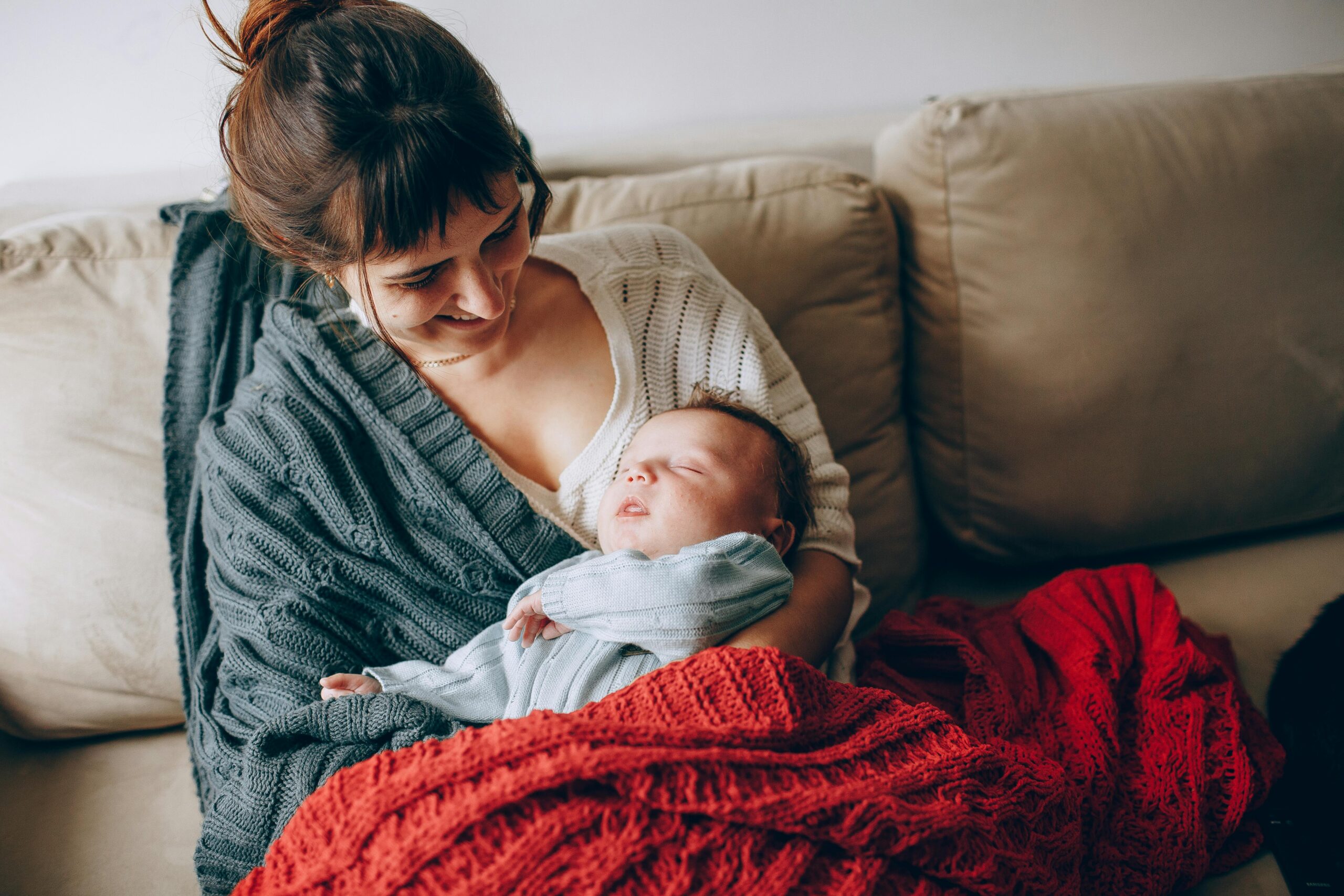Dressing a baby for sleep involves several considerations to ensure they are comfortable, safe, and warm. Let’s break it down How To Dress Your Baby For A Comfortable Sleep.

1. Room Temperature.
- Why It Matters: The room temperature is critical in how you dress your baby for sleep. Babies can’t regulate their body temperature as effectively as adults, so it’s essential to dress them appropriately.
- Ideal Temperature: The ideal room temperature for a sleeping baby is between 68-72°F (20-22°C).
- Adjusting Clothing: If the room is cooler, you’ll need to add more layers. If it’s warmer, fewer layers are necessary.

2. Clothing Layers.
- Base Layer: Start with a simple, breathable base layer like a cotton onesie. This layer should be soft against the baby’s skin and comfortable.
- Sleepwear Options:
- Onesies: A long-sleeve onesie is suitable for cooler nights, while a short-sleeve or sleeveless onesie is better for warmer conditions.
- Footed Pajamas: These are excellent for cooler weather, providing coverage without the need for additional socks.
- Two-Piece Pajamas: These are good for older babies who can move around more, as they offer flexibility and ease of diaper changes.
- Swaddles or Sleep Sacks: For newborns, swaddling can help them feel secure and sleep better. As babies grow, transitioning to a sleep sack, which is like a wearable blanket, is safer and provides warmth without the risk of loose blankets.

3. Material Choice.
- Breathability: Always opt for breathable, natural fabrics like cotton or bamboo, which allow air to circulate and reduce the risk of overheating.
- Moisture-Wicking: If your baby tends to sweat, moisture-wicking fabrics can help keep them dry and comfortable throughout the night.
- Avoid Synthetic Fabrics: Avoid using synthetic materials like polyester, as they can trap heat and moisture, leading to discomfort.

4. Swaddling (Newborns)
- Purpose: Swaddling helps prevent the startle reflex, which can wake a newborn. It also keeps them snug and warm.
- Technique: Make sure the swaddle is snug around the baby’s chest and arms but loose around the hips to allow for healthy hip development.
- When to Stop: Discontinue swaddling when the baby shows signs of rolling over, as this could increase the risk of suffocation.

5. Sleep Sacks (Older Babies).
- Why Use Them: Sleep sacks replace loose blankets, which can be dangerous due to the risk of suffocation. They come in various thicknesses for different seasons.
- TOG Rating: Sleep sacks are often rated by TOG (Thermal Overall Grade), which indicates how warm they are. A 1.0 TOG is suitable for warmer rooms, while a 2.5 TOG is better for cooler environments.

6. Overheating Risks.
- Signs of Overheating: A baby who is overheating may feel warm to the touch, especially on the chest or back, and may appear flushed or sweaty.
- How to Avoid It: Dress your baby in layers that can be easily removed if they seem too warm. Never cover a baby’s head while sleeping, as they lose a significant amount of heat through their heads.
- Monitor: Regularly check your baby’s temperature by feeling their chest or the back of their neck. Hands and feet are usually cooler and not a good indicator of overall body temperature.

7. Safe Sleep Practices.
- Back to Sleep: Always place your baby on their back to sleep, as this position significantly reduces the risk of Sudden Infant Death Syndrome (SIDS).
- No Loose Items: The crib or bassinet should be free of loose blankets, pillows, and stuffed animals, as these can pose a suffocation hazard.
- Proper Fit: Make sure your baby’s sleepwear is snug but not too tight. Loose clothing can bunch up and cover the baby’s face.

8. Seasonal Considerations.
- Winter: Layer your baby’s clothing, and consider a thicker sleep sack. Ensure that the nursery is not too cold, and use a humidifier if the air is dry.
- Summer: Choose lighter fabrics and fewer layers. A short-sleeve onesie or even just a diaper and a light sleep sack may be sufficient.

9. Adjusting for Special Conditions.
- Illness: If your baby is sick, particularly with a fever, it’s crucial to dress them in lighter layers to avoid overheating. Consult your pediatrician for guidance.
- Premature Babies: Premature babies may need extra warmth, but it’s essential to monitor them closely to avoid overheating. Follow your doctor’s recommendations.

10. Personalizing Based on Baby’s Comfort.
- Every Baby is Different: Pay attention to your baby’s cues. Some babies prefer more layers, while others may get too warm easily. Adjust accordingly.
- Trial and Error: It may take some experimentation to find the right balance of layers and sleepwear for your baby.

By following these guidelines, you can help ensure that your baby sleeps comfortably and safely, contributing to better sleep for both your baby and you.


2 thoughts on “How To Dress Your Baby For A Comfortable Sleep”